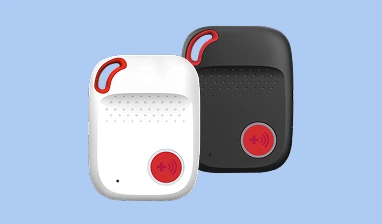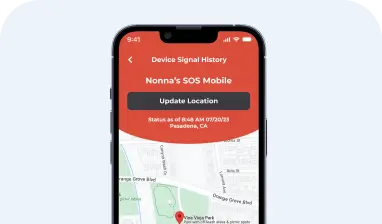With America’s population growing older, more families are facing tough decisions about how to manage long-term care needs. Nursing homes and skilled care facilities are in greater demand than ever, but the rising costs can put serious strain on personal finances.
For older adults who require round-the-clock medical attention or specialized services, the financial burden can feel overwhelming. Fortunately, there are practical ways to manage these expenses—even when budgets are tight. From tapping into government programs to exploring lower-cost alternatives like in-home care, this guide outlines your options for making nursing home care more financially manageable.
Table of Contents
- How Much Does a Nursing Home Typically Cost?
- How To Reduce Nursing Home Costs
- Will Medicare Pay for a Nursing Home?
- Will Medicaid Pay for a Nursing Home?
- How To Find a Nursing Home That Takes Medicaid
- Can Social Security and Supplemental Security Income Pay for a Nursing Home?
- Can Long-Term Care Insurance Help Seniors?
- Other Ways To Pay for Nursing Home Care
- Alternatives To a Nursing Home
- Benefits of Aging in Place
- Grants for Home Modifications
How Much Does a Nursing Home Typically Cost?

Before diving into the financial side of things, it’s helpful to clarify what “nursing home” really means today. While the term is still widely used, senior care has evolved into several different types of living environments, each with its own level of support—and associated cost.
Independent Living is best suited for older adults who are active, mobile, and mostly self-sufficient. These communities often have healthcare professionals available for check-ins, but do not provide day-to-day caregiving.
Assisted Living is a good fit for seniors who need regular help with basic daily tasks like dressing, bathing, or managing medications. Caregivers are on-site around the clock.
Memory Care is tailored for individuals with Alzheimer’s or other cognitive conditions, offering secure environments and trained staff to provide specialized support.
Skilled Nursing Facilities offer the highest level of medical care outside of a hospital. These facilities have licensed medical staff on duty 24/7 and can support both short-term rehabilitation and long-term care needs.
Knowing which type of care your loved one needs can help you more accurately estimate costs and plan accordingly. According to the U.S. Administration for Community Living, average monthly costs are as follows:
- Skilled nursing (semi-private room): $6,844
- Skilled nursing (private room): $7,698
- Assisted living facility: $3,628
While these figures can feel overwhelming, narrowing your options to the most appropriate level of care is a practical first step. By matching your loved one’s needs with the right type of support, you can build a more realistic—and sustainable—financial plan.
How To Reduce Nursing Home Costs
For many families, reducing the financial burden of nursing home care is essential. One practical way to cut costs is by selecting a semi-private or shared room instead of a private one. Although this may come with less personal space, the savings can be considerable.
Another effective approach is to review the services included in your loved one’s care plan. Many nursing homes offer additional amenities that may not be needed for every resident. By working with the facility to customize a care plan—focusing only on essential services—you can avoid paying for extras and better manage monthly expenses.
Will Medicare Pay for a Nursing Home?
Medicare provides limited coverage for nursing home care, and only under specific circumstances. It does not cover assisted living.

Medicare Part A may pay for a short stay in a skilled nursing facility if:
- The individual has had a qualifying hospital stay of at least three consecutive days.
- The nursing home care is related to the condition treated during hospitalization.
- Skilled nursing or rehabilitation services are medically necessary.
When these criteria are met, Medicare covers:
- 100% of costs for the first 20 days.
- 80% of costs for days 21–100, as long as the patient continues to meet care plan goals.
However, Medicare does not cover long-term or custodial care. Once rehabilitation goals are no longer being met or the 100 days expire, families must find alternative payment options.
For more detailed information, see this publication on the CMS (Centers for Medicare & Medicaid Services) website.
Will Medicaid Pay for a Nursing Home?
Medicaid, a joint federal and state program, is the primary source of funding for long-term care for individuals with low income and limited assets. It can help cover the cost of skilled nursing facilities and, in some cases, assisted living.
When planning for Medicaid coverage:
- Confirm early whether a facility accepts Medicaid, as not all do.
- Be aware that Medicaid-certified beds may have waiting lists, so starting your search early is crucial.
Medicaid nursing home coverage typically covers:
- Room and board
- Nursing and medical care
- Personal care services
- Prescription medications
- Therapies
- Medical supplies and equipment
Coverage amounts and eligibility rules vary by state. Generally, individuals must meet strict income and asset requirements. Consulting a Medicaid planner or elder law attorney can help you navigate the process.
If you or your loved one are already in a skilled nursing facility, the Social Worker on staff can help you explore Medicaid options and eligibility.
How To Find a Nursing Home That Takes Medicaid
Locating a Medicaid-accepting nursing home can be challenging, but several resources can help:
- Contact your state’s Medicaid office for a list of approved facilities.
- Use online tools like the Eldercare Locator and Medicare’s Nursing Home Compare.
- Ask for referrals from friends, family, or healthcare providers.
- Consult the senior living experts where you or your loved one currently live—they often have strong networks and can offer valuable suggestions.
Once you have a shortlist, it’s important to visit each facility in person to evaluate the care environment.
Can Social Security and Supplemental Security Income Pay for a Nursing Home?

Social Security and Supplemental Security Income (SSI) benefits can help offset nursing home costs, though they typically don’t cover the full amount.
- Social Security benefits are based on your work history.
- SSI is for seniors with minimal income and assets.
In 2021, the federal SSI payment was $794 per month for individuals and $1,191 per month for couples. These funds can help with basic expenses, but most residents will need additional financial assistance through Medicaid or long-term care insurance to fully cover nursing home costs.
Can Long-Term Care Insurance Help Seniors?
Long-term care insurance is specifically designed to cover expenses like nursing home care. Having a policy can significantly ease financial burdens, but it’s important to purchase coverage before serious health issues arise. Pre-existing conditions may result in denial of coverage or significantly higher premiums.
If you have a long-term care policy, be sure to review it carefully. Don’t hesitate to call your insurance company for clarification on what services are covered and under what conditions.
Other Ways To Pay for Nursing Home Care
Beyond Medicaid, Medicare, and insurance, other options may be available:
- Veterans Benefits: Veterans and their spouses might qualify for VA Aid and Attendance benefits to help pay for assisted living or skilled nursing care. Contact your VA representative for more information.
- Charitable Organizations: Some nonprofits offer grants or low-cost loans for seniors in need. Check with your town’s senior services office or local senior service agencies for leads.
Alternatives To a Nursing Home
For many seniors, aging in place is a preferred alternative to moving into a nursing home. Aging in place enables older adults to stay in their own homes or communities while receiving the necessary support to remain safe and independent.
Benefits of Aging in Place
There are many advantages to aging in place, including:
- Improved emotional well-being by staying in familiar surroundings.
- Stronger social ties with family and community.
- Greater sense of independence and control.
Additionally, by avoiding communal living environments, seniors may reduce their exposure to infections and illnesses.
Grants for Home Modifications
Home modifications can make aging in place safer and more feasible. Common updates include:
- Installing grab bars
- Adding wheelchair ramps
- Widening doorways
- Installing stairlifts
Several programs can help cover the costs of these improvements. The U.S. Department of Agriculture’s Single-Family Housing Repair Loans & Grants program (Section 504 Home Repair) offers:
- Loans up to $40,000 with a 1% interest rate.
- Grants up to $10,000 for eligible homeowners.
Nonprofit organizations can also assist:
- Habitat for Humanity’s Aging in Place program helps seniors make safety modifications.
- Rebuilding Together’s Safe at Home program focuses on making critical repairs for seniors to stay safely at home.
Conclusion
Navigating the financial challenges of nursing home care can feel overwhelming, but it’s far from impossible.
By understanding care costs, exploring government programs, leveraging insurance options such as long-term care insurance, and considering alternatives like aging in place, seniors and their families can find ways to access the support they need while staying within budget.















